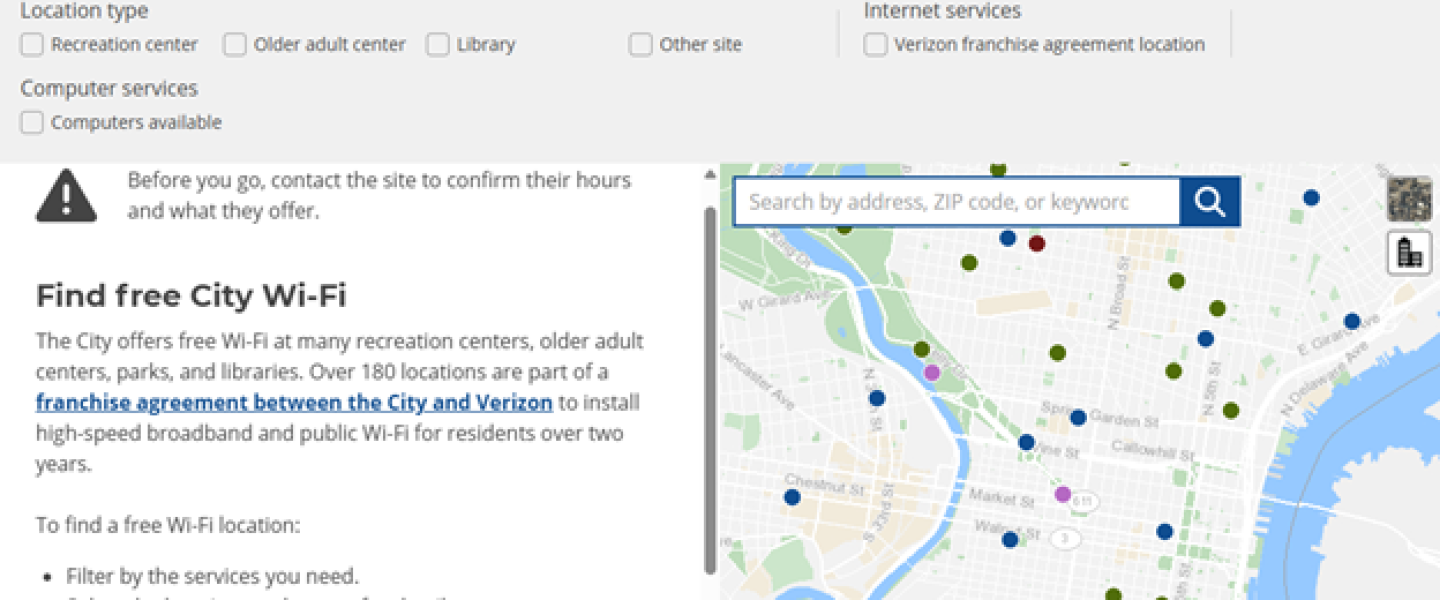Officials have leveraged data to improve both accessibility and racial equity in the city, and it can also be used to address broadband equity for local government.
Both of Philadelphia’s new tools, the Philly Free Wi-Fi Finder and the Philly Free Wi-Fi Dashboard, were announced within the past month. The city’s ultimate goal is to bring public Wi-Fi service to all of its neighborhoods.
The first, unveiled March 31, is an interactive tool allowing users to find nearby access options for free Wi-Fi service. Locations displayed on this tool include libraries, recreation centers, centers for older adults, parks and city buildings.

The interactive dashboard features a map illustrating the progress the city has made in expanding high-quality Internet access to more than 180 sites it owns.

“With these new tools, the Office of Innovation and Technology is making it easier for residents to get online while also providing industry leaders with the data they need to expand digital access across our city,” Philadelphia CIO Melissa Scott said Tuesday in a statement announcing their arrival.
The Philly Free Wi-Fi Finder includes several key features for a simple user experience, including the ability to search by address to find nearby city Wi-Fi and computer services, and information on 105 free Wi-Fi sites.
In July 2024, the city announced the renewal of the Verizon franchise agreement first granted in 2009. The pact enables Verizon to provide cable services and to modernize city facilities’ Internet access. As part of that agreement, Verizon is required to provide broadband Internet access to 183 city-owned recreation centers within two years of the signing — and up to 261 additional city-owned properties of Philadelphia leaders’ choice.
The Philly Free Wi-Fi Finder provides information about 51 of the more than 100 installations completed since October as part of this agreement.
While that tool is geared more to help Philadelphia residents find access to meet their needs, the Philly Free Wi-Fi Dashboard aims to help residents and policymakers, Internet service providers, community organizations and others, by providing real-time data on broadband access, adoption trends and areas that lack access to sufficient connectivity.
The Philly Free Wi-Fi Dashboard’s features include graphs displaying project completion, city Wi-Fi coverage maps to illustrate gaps, and detailed demographic information by census tract, ZIP code and council district.
Editor’s note: This story has been updated to include a chart tracking reasons Philadelphia residents lack Internet access.















